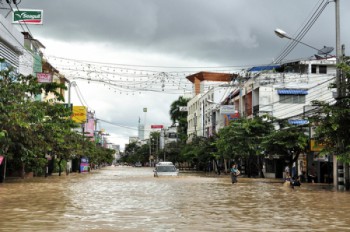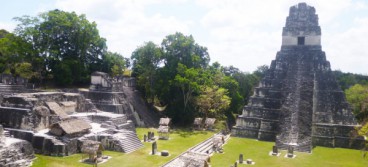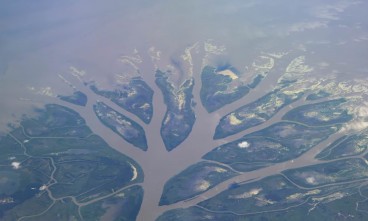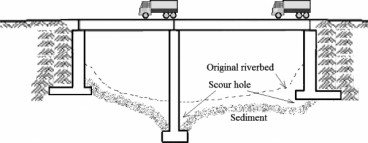Lessons to learn: How ancient people adapted to climate change

A scientific research gives a new perspective on how ancient cultures dealt with variable and changing environments
A scientific research gives a new perspective on how ancient cultures dealt with variable and changing environments
The adaptation to climate change is a ‘hot’ issue, and scientists have turned to our ancestors for answers, examining how they have dealt with similar transitions. Using the case study of South Asia's Indus Civilization (c.3000-1300 BC), researchers from the University of Cambridge and Banaras Hindu University in India, explored the dynamics of adaptation and resilience in a varied environmental context. This particular population provides a unique opportunity to understand how an ancient society coped with diverse environmental parameters, as there is evidence that northwest India was subject to climate change during the period when the Indus Civilization was at its height (c.2500-1900 BC). Their study was published last year in Current Anthropology.
As part of the Land, Water and Settlement project, the researchers worked in northwest India between 2007 and 2014, recording how Indus populations interacted with their environment, while taking into consideration how that environment changed during periods of climate change. As expected, water was a critical factor: "for most ancient complex societies, the availability of water and the way that it was managed and used provide critical insight into human adaptation and the resilience of subsistence practices", says the study’s lead author, Dr. Cameron Petrie of the Division of Archaeology, University of Cambridge.
In the early Holocene, the Indus Civilization was situated in proximity to Kotla Dahar, a deep lake, implying regular and consistent rainfall input to offset evaporation, which given its location, would have been primarily monsoonal. The lake though, showed evidence of two dramatic decreases in monsoon rainfall and a progressive lowering of its level. During the second one, it seems that Kotla Dahar became completely ephemeral ca. 2200-2000 BC as a result of an abrupt weakening of the monsoon (the weakening of the monsoon is visible in speleothem records in Oman and northeast India). The proximity of the Kotla Dahar record to the area occupied by Indus populations shows that climate must be formally considered as a contributing parameter in the process of Indus deurbanization, at least in the context of the plains of northwest India.
"We argue that rather than being forced to intensify or diversify subsistence practices in response to climatic change, we have evidence for the use of millet, rice, and tropical pulses in the pre-urban and urban phases of the Indus Civilization", comments Petrie. "This evidence suggests that local Indus populations were already well adapted to living in varied and variable environmental conditions before the development of urban centers. It is also possible that these adaptations were beneficial when these populations were faced with changes to the local environment that were probably beyond the range of variation that they typically encountered".
Source: University of Cambridge
Source: University of Cambridge
Want to read more like this story?

How climate change has affected real estate business
Nov, 11, 2019 | NewsClimate change is a phenomenon that leads to sea water-level rise affecting the coastal areas. But h...

European cities and climate change: Their adaptation is a necessity in order to survive
Jul, 18, 2016 | NewsA new report from the European Environment Agency (EEA) shows the benefits of investing in long-term...

Poor water management likely led to the Ancient Maya collapse
Sep, 21, 2016 | NewsScientists’ model calculations in TU Wien may have found a (new) explanation Scientists&rsq...

Study of future coastal flooding impact on river delta populations
Oct, 09, 2020 | NewsA new study evaluates the impact of coastal flooding caused by climate change on human population....

Hydrologic Cycle in the Balance for Midwest US
May, 20, 2015 | NewsA new study from Dartmouth College suggests that the fate of the climate during the summer growing s...

Climate change could cause over 500,000 extra deaths in 2050
Apr, 04, 2016 | NewsHealth impacts due to changes in agricultural production are currently examined Health impacts du...

The 'urban heat island' effect could force several major cities to face climate change costs at least twice as big as the rest of the world
Oct, 10, 2017 | NewsSome of the world’s largest cities could face temperatures up to 8°C higher than those of...

The Earth Is Still Too Hot!
Jun, 08, 2015 | NewsDespite the widespread impression that in recent years there has been some respite and slowdown in c...

How climate change is affecting the safety of bridges
Oct, 15, 2019 | NewsA new study, recently published in the American Society of Civil Engineers (ASCE) Jou...
Trending

Vertical gardens in Mexico City to combat pollution

Characteristics of Load Bearing Masonry Construction

Taipei 101’s impressive tuned mass damper

Dutch greenhouses have revolutionized modern farming

The Line at Neom faces feasibility reassessment while construction continues

The Line at Neom faces feasibility reassessment while construction continues

King Salman Gate unveiled adjacent to Mecca’s Grand Mosque

